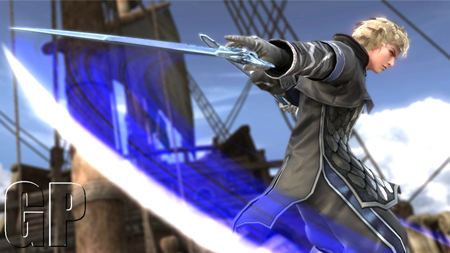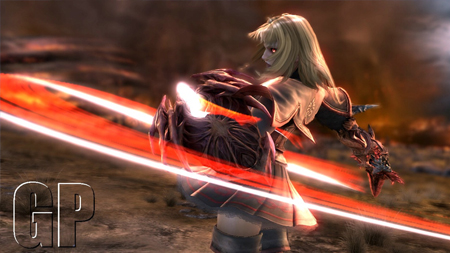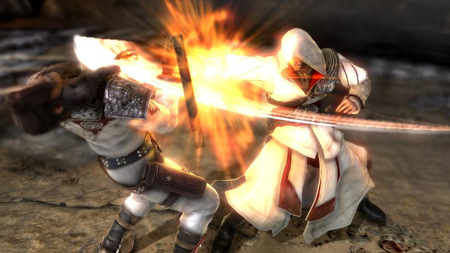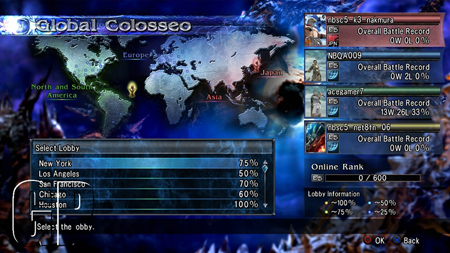SoulCalibur V review (PS3)
Review by John Cranston
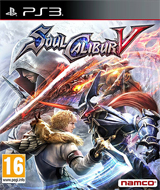 Welcome back to the stage of history, a time when combat was civilised and men, women and monsters fought each other with swords and sticks, not their bare fists.
Welcome back to the stage of history, a time when combat was civilised and men, women and monsters fought each other with swords and sticks, not their bare fists.
With this new instalment, developers Project Soul have done much with SoulCalibur VÂ -Â available now for PS3 and Xbox 360 -Â to ensure it is accessible to newcomers, though at the risk of alienating some die-hard fans.
For the uninitiated, the “Soul” games have been providing players with the opportunity to compete in bouts of one-on-one combat for the last sixteen years. Much like the Street Fighter and Tekken series, it has maintained a high level of popularity amongst arcade and console players alike.
Since its inception, the series has continually expanded and changed its roster of characters but failed to present an understandable chronology or rationale behind the changes. In an attempt to reign in the narrative, SoulCalibur V contains a story mode focused on explaining the introduction of two of the new characters – siblings Phyrra and Patrokolos.
Set 17 years after the events of SoulCalibur IV (which I’ve played extensively and still fail to recall the plot), the siblings, though separated at birth, were destined to clash as wielders of the Soul Calibur and Soul Edge – two mystical swords representing good and evil. As they travel across the globe in search of each other, you will encounter several of the characters from the game, at times as opponents and at other times you’ll control them.
It serves as an excellent introduction to the game mechanics and is a great way for new players to discover the possible variety in fighting styles, however it’s very short – completable in a just a couple of hours. It ignores a lot of the secondary characters entirely, there’s not even a hint of the appearance of Ezio Auditore, and it also scrimps on the post-battle cut scenes by using animated storyboards to tell the tale the majority of the time, only rarely opting for in-engine renders, which is a real shame as the characters and environments are sumptuous.
Whilst playing you’re bound to discover the largest new inclusion to the series – the Critical Edge attacks – as well as a major overhaul to the block and parry system. Expect to spend a lot more time on the offensive, as each attack you land builds up a gauge allowing you to unleash hugely powerful and potentially game-changing combos. Personally I preferred this change as it made the battles faster, more fluid and way more intense – rather than blocking everything and looking for openings in your opponents’ defences, you’re rewarded for playing more aggressively.
Aside from the story, players looking for a solo experience are able to play as any (unlocked) character in the Arcade mode – a run of six progressively more difficult fights against CPU opponents. Legendary Souls mode is a copy of the Arcade mode with the difficulty jacked up to 11, definitely not for the faint-hearted or people prone to pad-flinging. The stalwart Versus mode is there too, for individually chosen fights against friends or CPU.
Quick Battle is an offline clone of the multiplayer experience, in which you can fight custom made characters, both those included by developers and some imported from those who connect to play online. There’s also a training mode, in case you want to master the moveset for your favourite character, rather than button mashing blindly. It sounds like a lot written down, but the solo experience in this game does feel quite limited.
In addition to the expansive roster of characters, you’re able to create up to fifty of your own, either by modifying the costumes and weapons of the main characters, or by cloning their moveset onto an entirely new creation. In previous games the choice of equipped items altered the strengths, weaknesses and capability of your fighter. This complex customisation has been removed entirely, so everything you change is purely for superficial reasons.
It could be argued that this is a bad thing, but due to the heavy bias toward the online and versus modes this game has, it actually creates a more level playing field and allows players to achieve victory by moveset mastery rather than crafty placement of silly hats, big boots and glittery boobtubes. It also means you can bring your imagination to life and not be penalised when you actually play the game.
The core component in SoulCalibur V is the online multiplayer, which has never been an aspect of the series I’ve enjoyed before – partly due to my own lack of skills and partly due to poor matchmaking or laggy gameplay. Thankfully the latter has vastly improved in the three distinct online modes – Ranked matches, Player matches and Global Colosseo.
Choosing to fight ranked will attempt to match you up with players of equivalent skill, though a custom search can be made if you prefer to play with people with better connections or from a specific continent. I couldn’t quite pin down why, but once you’re matched with someone you’re able to decline the fight, which seems odd as surely the point of ranking is to gauge your skill on a global basis.
Player matches can follow a similar fashion, but with the added bonus of public and private lobbies. Up to six players can join a lobby and compete against each other, with two players fighting while everyone else watches and chats about the action using voice or text. It can be a lot of fun and educational as well, as you get to talk about the game with people that really know how to play it well.
Finally, the Global Colosseo is a massive 60-player lobby in which players are represented by their profile card – a combination of a profile picture, a title and some basic information about your region, fully customisable from the main menu. Hover the cursor over another players’ card and you’re also treated to details of their win-loss ratio. If you want to challenge someone specific you may, but most of your fights will come from choosing the random match option, or taking part in time-specific tournaments.
As I played the game during its pre-launch window, the volume of online players was limited, with only two city lobbies being populated – New York and Paris. Only time will tell how popular these become and what longevity they have, but from what I experienced there was very little delay in getting a fight and the fluidity of the battles never seemed to be compromised, even against those with supposedly poor connections.
It should come as no surprise that my overall appraisal of the game is a positive one, though given that there’s such a heavy bias toward multiplayer it may not be suitable for everyone. In a year where fighting games will be two-a-penny, SoulCalibur V has landed a significant opening blow.
 SoulCalibur V scores 8 out of 10
SoulCalibur V scores 8 out of 10
